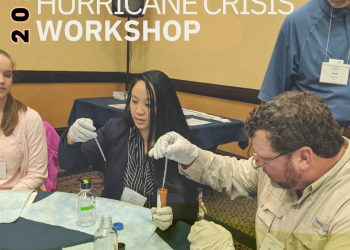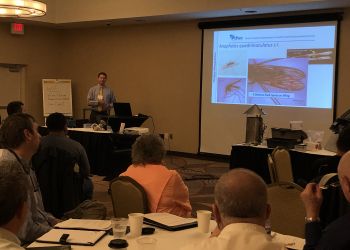This blog post was written by: Dr. Sarah Taft, Division Director (Acting) for the U.S. Environmental Protection Agency National Homeland Security Research Center
Large-scale disruptions from intentional chemical, biological, and radiological contamination events, natural disasters like hurricanes, or industrial accidents such as oil spills cause devastating effects on human health and the environment. The aftermath yields contaminated material that may threaten public health, produces waste and results in significant economic impacts. Helping communities across the county become more resilient against catastrophes is critical.
The U.S. Environmental Protection Agency’s (EPA) role in Homeland Security is to advance the Nation’s remediation capabilities and emergency response by providing expertise, tools and data to prevent, respond to, and recover from disasters. At this year’s Preparedness Summit (March 26-29, 2019 in St. Louis), EPA researchers will share decontamination methods, case studies, and demo emergency response tools that can be used in disaster response and remediation following acute environmental contamination incidents. The following EPA sessions are part of this year’s conference theme, The Evolving Threat Environment:
- From Ricin to Fires to Fentanyl….How can we clean it up? (Town Hall)
- U.S. EPA Emergency Response Tools: Preparing for and Responding to Wide-Area Incidents
Environmental remediation following contamination
Many questions remain when making decisions about cleanup and clearance of contaminated sites. Being prepared for and responding to contamination incidents requires understanding contamination exposure and designing remediation strategies. EPA researchers will present a wide range of case studies conducted in response to a variety of challenges. The sessions will highlight strategies and describe case studies such as (1) Ricin contamination incident in Boulder, Colorado; (2) West Texas Fertilizer Plant Explosion; (3) Glendive, Montana oil contamination and impacts on water systems; and (4) Fentanyl contamination incidents.
Emergency Tools for Resilience
Emergency response tools, knowledge, and data can prepare state, tribal, and local decision-makers and responders to become more resilient in the face of extreme events. Researchers at EPA develop and constantly refine emergency response tools to mitigate, prepare for, and recover from public health and environmental emergencies. These tools range from managing waste and disposal to water system modeling.
EPA will demo the following tools at the conference session:
- The Environmental Sampling and Analysis (ESAM)
- Trade-Off Tool for Sampling (TOTS)
- Incident Waste Decision Support Tool (I-WASTE)
- West Estimation Support Tool (WEST)
- Using EPA’s Stormwater Management Model (SWMM) during response and recovery
- Waste Logistics Tool
Exchanging research results provides emergency personnel and responders with information and techniques needed to enhance the nation’s decontamination capabilities. For more information, visit the Homeland Security Research Program website.





